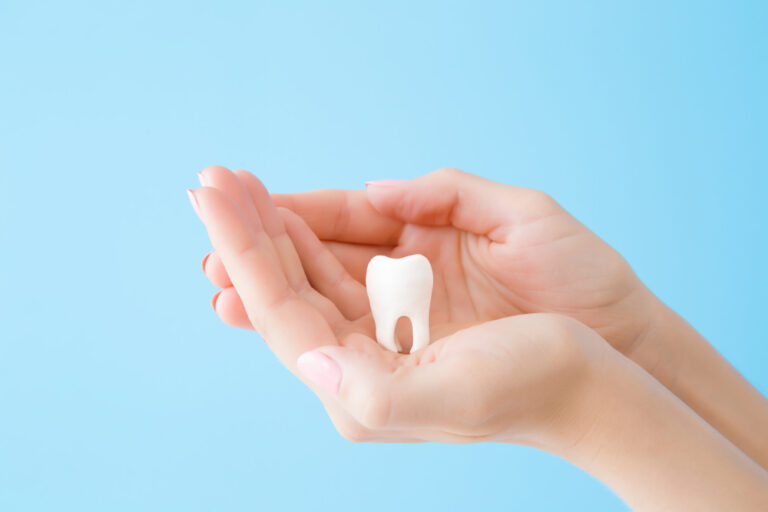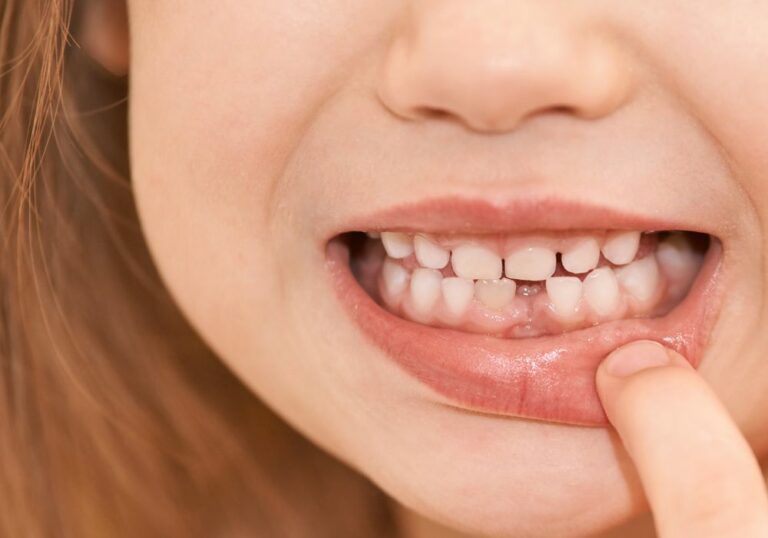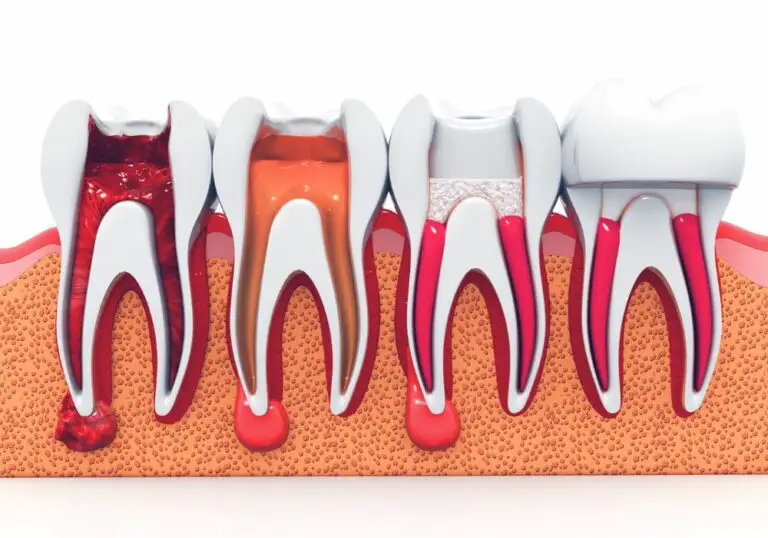Waking up one day with increased sensitivity or pain in your front teeth can be alarming. But while discomfort in the front incisors and canines can feel pronounced, the cause is usually identifiable. Understanding potential reasons for sudden tooth sensitivity can guide next steps for relief.
Anatomy of Teeth

The structure and composition of teeth make the front ones especially prone to sensitivity.
Enamel
The outermost layer of the tooth crown is enamel, the hardest substance in the body. Enamel helps protect the inner components of teeth. It can become weakened by acid and overbrushing.
Dentin
Underneath the enamel is dentin, a softer, porous tissue riddled with microscopic tubes leading to the pulp. Exposure of dentin is a main cause of sensitivity, as hot/cold stimuli penetrate through the tubules.
Pulp
At the core of the tooth is the pulp chamber containing the nerve, blood vessels, and connective tissues. Irritation of the pulp nerve triggers pain and discomfort.
Cementum
Cementum covers the tooth root and provides some protection. It’s softer than enamel and wears away with receding gums, also leading to exposure.
Gums
The gums provide a seal around teeth. When they recede and detach, it compromises the protection of underlying dentin and cementum.
The front teeth have less surrounding gum tissue and enamel thickness, especially as you look upwards from lower incisors to upper canines. This increases their tendency for sensitivity problems.
Why Sudden Sensitivity Occurs
There are several potential culprits that can suddenly make front teeth sensitive and painful out of the blue:
Receding Gums
Also called gingival recession, receding gums gradually detach from the base of the tooth. This exposes vulnerable dentin and cementum to temperature changes, sweets, and touch.
Risk factors for receding gums include:
- Periodontal disease – chronic bacterial infection
- Vigorous brushing with hard bristles
- Smoking/tobacco use
- Clenching or grinding teeth
- Diabetes and poor glycemic control
- Heredity – unsuitable gum tissue or bone structure
Even mild gum recession can lead to sudden sensitivity as more of the root surface becomes uncovered. Aggressive gum disease accelerates the process.
Dental Erosion
Acidic foods, beverages, medications, and gastric acids wear away the enamel over time. As the protective covering thins, sensitivity follows.
Common causes of erosion are:
- Carbonated soft drinks and sports drinks
- Citrus fruits and their juices
- Vinegar and salad dressings
- Wine and alcohol
- Stomach acids from reflux, vomiting, or bulimia
The thinner enamel of front teeth makes them prime targets for erosion. The rounded shape of canine teeth also wears faster than the flats of posterior teeth.
Cracked Teeth
Cracks allow irritants to seep deep inside the tooth structure. Composite fillings, which shrink over time, are prone to cracking that leads to pain.
Causes include:
- Chronic clenching and grinding
- Direct trauma or blows to the mouth
- Normal biting on hard objects like ice
- Large fillings without a protective crown
- Damaged dental work
Front teeth endure heavy chewing forces that take a toll over the years. Their thinner enamel is also easier to crack.
Tooth Grinding
Clenching and grinding, especially during sleep, places immense pressure on teeth. This can create micro-fractures, accelerate gum recession, and wear down the enamel. As protection diminishes, sensitivity follows.
The position and movement of front teeth make them prime targets for this excessive force. Awakening with sore, sensitive teeth may be the first sign of a nighttime grinding habit.
Recent Dental Work
Procedures like fillings, crowns, braces, and professional cleanings aim to improve oral health but may cause some temporary sensitivity. This should resolve as tissues heal and teeth acclimate.
Post-procedure sensitivity may come from:
- Contact between opposite teeth in new bite position
- Temperature changes shortly after treatment
- Pressure of braces on gum tissue
- Increased exposure from gum shaping
- Micro-cracks from adjustments
If sensitivity persists longer than a few weeks or worsens, be sure to notify your dentist.
Diagnosing Cause of Sensitivity

Dentists have several methods of tracking down the exact cause of sensitivity for appropriate treatment:
Visual Exam
Your dentist will first perform a thorough visual inspection, looking closely at your teeth and gums for:
- Signs of plaque, tartar, and gum disease
- Recession along the gumline
- Enamel thinning or loss
- Chipping or cracks
- Exposed dentin or roots
- Damage to restorations
- Evidence of acid erosion
- Abnormal bite alignment
X-rays
Dental radiographs provide additional views below the surface to help detect issues impacting sensitivity like:
- Bone and root integrity
- Decay between teeth
- Damage within the tooth
- Post-procedure complications
- Abscesses or cysts
Tactile Exam
Gently probing teeth with a dental instrument helps identify problems with the gums. Signs your dentist may look for include:
- Looseness
- Swelling or inflammation
- Sensitivity to touch
- Periodontal pocket depth
- Bleeding upon probing
Cold Air Test
A gentle puff of air across each tooth helps pinpoint exactly which ones have sensitivity and potential areas of concern.
Temperature Stimulus
Alternating hot and cold water can also help reproduce sensitivity symptoms and isolate affected teeth.
Transillumination
A specialized instrument beams light through the tooth to reveal any hidden cracks that could be causing pain.
Bite Pressures
Biting on a stick or sheet of foil can highlight problems with high spots, alignment, and bite forces.
Common Treatments for Sudden Sensitivity
Once the origin of sensitivity is determined, your dentist will recommend appropriate therapies which may include:
Fluoride
Topical fluoride strengthens enamel and prevents sensitivity signals from reaching the nerve in dentin tubules. It may be applied directly to affected teeth or delivered through custom trays, rinses, gels, foams, or toothpaste.
Sealants
Sealing over areas of exposed roots can block sensitivity. Your dentist may brush on bonding material or place temporary fillings to protect hot spots.
Desensitizing Medication
Special toothpastes or professional-grade gels contain active ingredients like potassium nitrate, stannous fluoride, or strontium chloride to block pain transmission.
Gum Grafting
Grafting donor gum tissue over receded areas restores lost tissue and covers vulnerable roots. This surgery requires sutures and several weeks of healing.
Root Canal
If decay or cracks extend deeply into the pulp, a root canal removes the inflamed nerve. The inner chamber is cleaned, sealed, and crowned for a pain-free restoration.
Night Guard
Also called an occlusal guard, this plastic appliance worn at night cushions teeth from grinding damage. This can relieve a lot of pressure on sensitive front teeth.
Dental Restorations
Crowns, veneers, fillings, or inlays may be recommended to rebuild cracked, worn, or damaged teeth and prevent irritants from entering.
Prevention Tips for Healthy, Non-Sensitive Teeth

Along with professional treatment, a few simple daily habits help keep teeth strong and sensitivity at bay:
- Brush properly – Use gentle pressure and a soft-bristled brush. Avoid abrasive whitening toothpastes.
- Floss daily – Flossing removes plaque that leads to gum disease, a top cause of sensitivity.
- Use fluoride – Fluoridated toothpaste strengthens enamel against decay and acids.
- Rinse – Swishing daily with antibacterial mouthwash promotes gum health.
- Watch acidic foods/drinks – Avoid or limit things like citrus, carbonated drinks, wine, and vinegar which erode enamel.
- Drink water – Swishing with water dilutes acids and stimulates saliva flow for natural buffering.
- Wait after meals – Don’t brush right after eating or drinking. Allow saliva to naturally neutralize acids first.
- Have regular cleanings – Professional cleanings remove bacteria and deposits that irritate gums and teeth.
When to Expect Relief from Sensitivity
The timeline for resolution of tooth sensitivity varies based on the cause and necessary treatment:
- For post-procedure sensitivity, improvement often occurs within 4 weeks as tissues heal and teeth settle into position.
- Switching to desensitizing toothpaste may bring relief in 2-4 weeks as ingredients become effective.
- Topical fluoride and prescription strength desensitizing gels from your dentist can work within a few weeks up to 2 months.
- Reconstructive treatments like crowns, veneers, or fillings can take a month or longer to fully shield the tooth interior.
- Gum grafting for recession takes approximately 6-12 weeks as grafted tissue reconnects with the teeth and regenerates.
- Adopting better brushing technique and dietary changes takes about 2 months to see benefit as enamel strengthens and exposure decreases.
- Night guards require an adjustment period of a month or so to make a noticeable difference in grinding forces.
Most causes of sensitivity respond very well within 1-2 months with prompt treatment. But some degree of relief should be apparent within the first 2 weeks. If discomfort persists or worsens beyond expected timeframes, consult your dentist right away for reevaluation.
Carefully following home care instructions is key for a successful outcome. Maintaining diligent oral hygiene and regular dental cleanings helps prevent recurrence of sensitivity. Report any lingering issues so your dentist can modify treatments before extensive damage occurs.
When is Tooth Sensitivity Urgent?
See your dentist right away if sensitivity is:
- Severe, constant, and disruptive to eating/drinking
- Accompanied by pain, swelling, or inflammation of gums
- Present with dental injury, chips, cracks or trauma
- Persistent for more than 2 weeks post-dental treatment
- Worsening steadily over time
- A new problem without apparent cause
Prolonged temperature sensitivity from receding gums or acid damage can progress to irreversible pulp inflammation if left untreated. It’s important to get prompt assessment and management of sudden sensitivity before it becomes a larger problem.
Frequently Asked Questions
Why are my upper teeth so sensitive all of a sudden?
The upper front teeth are especially prone to sensitivity issues for a few reasons:
- They have relatively thin enamel compared to other teeth
- The rounded shape of canines wears faster than the chewing surfaces of back teeth
- More limited blood supply makes them slower to recover from inflammation
- More plaque and bacteria accumulate along the gumline
Common culprits for sudden upper tooth sensitivity include dental erosion, receding gums, nighttime grinding, and ill-fitting dental work.
What does sensitivity to cold drinks mean?
Typically, if a tooth hurts from cold stimulants but not hot, it indicates the inner dentin layer is exposed. This allows cold through the tiny tubules to reach the nerve. Frequent causes are receding gums, worn enamel, or cracks that leave the dentin unprotected.
Why would sensitivity come and go?
Intermittent sensitivity suggests a reversible condition like inflammation of the pulp. Temperature changes provoke nerves symptoms one day but not the next as swelling goes down. Cracked teeth may also cause on-and-off sensitivity depending on the position of the fracture. Identifying the origin is key to resolving unpredictable sensitivity.
Is teeth sensitivity always a cause for concern?
Brief sensitivity from dental procedures or foods is usually harmless, if uncomfortable. But recurring or persistent sensitivity, especially with no apparent cause, should be evaluated promptly. Leaving it too long risks severe enamel loss, unrestorable cracks, or need for root canals or tooth extractions.
How can I tell if pain is from a sensitive tooth versus a cavity?
Tooth decay usually causes achiness and pain that lingers and throbs even after a stimulus is removed. Sensitivity from exposed dentin or pulp causes sharp pain during eating or drinking that disappears shortly after. Temperature and visual exams by your dentist help distinguish sensitivity from cavities.
In summary, sudden sensitivity in front teeth should never be ignored. Start by seeing your dentist for an accurate diagnosis of the cause. With proper treatment applied in a timely manner, the longevity and functionality of your teeth can be preserved.






